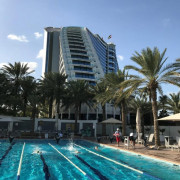Brazil
Содержание:
- Brazilian geography
- Краткая история
- Brazil is massive
- World Heritage site
- Общая информация о Бразилии
- Interesting facts Brazil symbols
- Brazilian statistics
- Климат
- Растительный и животный мир
- Government buildings
- Higher education
- Interesting facts about Brazil
- Credits
- References
- Brazil number ones
- External links
- Funny Brazil facts
Brazilian geography
Brazil is mostly a tropical country that has many geographical features in its territory, from desert to rainforest and mountain.
The highest mountain in Brazil is Neblina Peak, reaching 9,822 ft (2.994 m). This massive Brazil fact (pun intended) is a blast for adventure and hike lovers.
That’s because Neblina Peak is a unique and challenging hike that takes you to the limit before even you get to the mountain.
The whole trip includes a boat, 4×4 jeep, and trekking through the jungle to reach Brazil’s highest point. Totally worth it.
And while Brazil has many modern cities, colonial towns, pristine beaches, and breathtaking mountains, the second-most visited place in the country is the Iguazu Falls.
The entrance gate for most visitors is Rio de Janeiro, of course.
As for its borders, Brazil borders all countries in South America, except Chile and Ecuador.
Краткая история
Федеративная Республика Бразилия, история которой началась в начале XVI столетии, – это страна, которая многое испытала на своем веку. В 1500 году мореплаватель Кабрал из Португалии открывает европейцам новые земли, на которых обитали индейские племена, а через 30 лет начинается колонизация страны. Сюда прибывают первые переселенцы и основывают ряд феодальных владений (капитании). Вскоре на тростниковых плантациях колонистов появляются рабы из Африки.
В XIX веке принц Жуан из Португалии, спасавшийся от войск Наполеона, провозглашает государство королевством. Через несколько лет его сын, объявивший Бразилию независимой, получает титул императора и отменяет рабство в стране. После свержения его власти, с 1889 года и по настоящее время Бразилия является федеративной республикой. Бывшие провинции, называемые штатами, получили автономию и собственные законодательные органы.
До середины 80-х годов прошлого века года страна находилась под властью авторитарных президентов, и только 30 лет назад начался период демократизации. Принципы государственного устройства действуют и поныне, а в конституцию вносятся новые поправки.
Brazil is massive
Brazil is the fifth most significant and most populated country in the world. In relative terms, Europe is slightly larger than Brazil, making it the largest country in South America.
Brazil is not only enormous, but it also boasts about two-thirds of the Amazon Rainforest. Although this is a fact about Brazil to be proud of, the government is doing little to nothing to preserve it.
Amazon, on the other hand, is the largest rainforest, and the place still has the world’s largest river in volume.
While Amazon is a unique place on earth, the world’s largest swamp is also in Brazil. The Pantanal is an “up and coming” tourist destination in the last five years.
World Heritage site
The Brazilian capital is the only city in the world built in the twentieth century to be awarded by UNESCO, a United Nations agency since 1987, the status of being a World Heritage Site.
In order to be considered for World Heritage status, a site must fulfill one of ten standards for qualification. Brasilia fulfilled two:
- to represent a masterpiece of human creative genius
- to be an outstanding example of a type of building, architectural or technological ensemble or landscape which illustrates (a) significant stage(s) in human history
Created from nothing in the center of the country Brasilia is a landmark in the history of town planning, from the layout of the residential and administrative districts to the symmetry of the buildings themselves, which are designed to harmonize with the city’s overall design. The official buildings, in particular, are innovative and imaginative.
Общая информация о Бразилии
Официальное название: Федеративная Республика Бразилия
Столица: Бразилиа
Площадь территории: 8 547,4 тыс. кв. км
Общее население: 201,1 млн. чел.
Административное деление: Государство разделено на 23 штата, один столичный округ и 3 федеральных территории.
Форма правления: Республика, с федеративным государственным устройством.
Глава государства: Президент, избираемый на 5 лет.
Состав населения: Этнические группы: белые — 53.9 %(португальцы — 20 %; итальянцы — 14 %; испанцы — 8 %; немцы — 6,6 %; арабы — 5,3 %); мулаты — 38,5 %; чёрные — 6,2 %; азиаты — 0,5 % ( японцы и пр.); индейцы — 0,43 % (тупи-гуарани, же, араваки, карибы, пано и др.).
Так же есть самбо (афро-индейцы) и пардо (коричневые) — их количество точно не известно.
Государственный язык: португальский. Также используются испанский, немецкий, итальянский, японский , украинский , английский и индейские языки.
Религия: 73,6% — католики, 15,4% — протестанты, 1,3% — спиритуалисты, 0,3% — банту/вуду, 7,4% — атеисты, 2% — другие.
Интернет-домен: .br
Напряжение в электросети: ~127 В/220 В, 60 Гц
Телефонный код страны: +55
Штрих-код страны: 789-790
Interesting facts Brazil symbols
São Paulo State’s flag was supposed to be Brazil’s flag
After the country became a republic, people wanted a new flag to represent a new beginning.
Many projects were presented to the authorities at the time. Still, the current flag of São Paulo is one of the best-known rejected projects.
And because of this rejection, the state of São Paulo won a tricolor flag where each color represents the major ethnic groups in Brazil.
The black represents the African slaves who built the country, the white represents the European immigrants, and the red represents the Indigenous people of our lands.
The stars on the Brazilian flag depicts a specific starry night
The starry night on the flag, a national symbol of Brazil, isn’t any ordinary night, but the one of November 15, 1889, as seen from Rio de Janeiro.
On that day, a military coup d’etat established the Republic of Brazil, and an astronomer was asked to draw the sky above their heads and mark that day in history. (And in our flag too.)
The lone star in the flag isn’t the capital, Brasília
Each star on the Brazilian flag represents a state or the capital.
While many people believe the lone star at the top half of the flag is Brasília, the country’s capital, I can tell you that’s a big misconception.
In fact, that star represents Pará, a northern state. At that time, Pará was the northernmost state in Brazil, Amapá and Roraima were created later.
And since each state’s position was chosen according to their location in Brazil, Pará is the lone star.
Brazilian statistics
Brazil has about 180 spoken languages
Yes, at least 180 languages. Although Portuguese is the official one, the other languages are spoken mostly by about 160,000 indigenous people.
However, according to the linguist Aryon Rodrigues from the National University of Brasilia (UnB), these languages are treated with extinction since fewer than 10,000 people currently speak them.
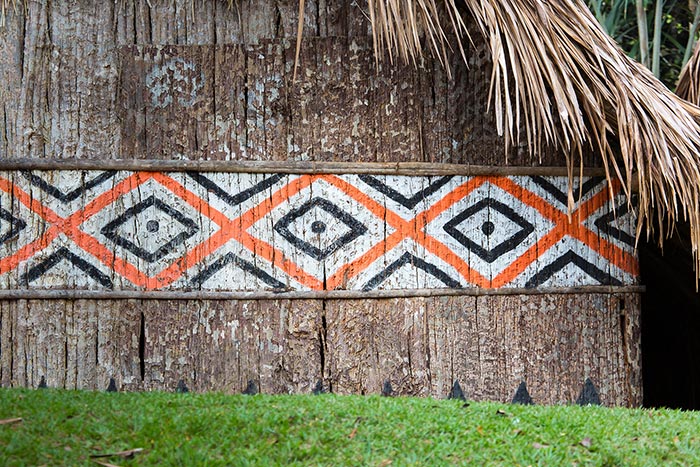
Brazil receives half the number of tourists Berlin does
While Brazil is a large country, there is still a lot to do in terms of increasing awareness about the country and attracting international tourists.
To put it into perspective, Brazil received 6.6 million tourists in 2018, while Berlin received 13.5 million in the same period.
Yes, a capital in Europe receives more tourists than a country with continental proportions.
It’s undeniable that criminality is an issue that the government isn’t very interested in solving. However, when taking necessary precautions and staying in the tourist routes, it’s improbable something will happen to visitors.
Brazil has the largest Japanese community outside of Japan
In 1908, the first Japanese immigrants arrived in Brazil, and since then, it has developed into the most significant ethnic Japanese population outside of their home country.
This is a pretty cool fact about Brazil, considering both cultures are very different from each other.
Nowadays, about 1.5 million Brazilian Japanese live in Brazil.
São Paulo has the highest GDP in the southern hemisphere
Brazil is a country of extremes, and this fact about Brazil only proves my point.
While millions of people in Brazil fight against extreme poverty, São Paulo is among the most important financial and industrial centers in the world and has the highest GDP in the southern hemisphere, let alone Latin America.
Many countries on other continents, including in Europe, have smaller economies than this huge South American city.
São Paulo dictates the pulse of the Brazilian economy as it accounts for over 30% of the country’s GDP.
The city’s GDP was about $530 billion in , while the GDP of Mexico City was about $490 billion in the same period.
Климат
Несмотря на то, что 90% территории страны находятся в тропическом поясе, более 60% населения Бразилии проживает в зоне умеренных температур, формирующихся под воздействием преобладющих высот, дующих со стороны моря ветров и фронтов холодного воздуха.
В Бразилии представлены пять климатических типов: экваториальный, тропический, полузасушливый, тропический высокогорный, и субтропический. Для городов, расположенных на равнинной местности, таких как Сан-Пауло, Бразилиа и Бело-Оризонте, характерны умеренные температуры среднее значение которых составляет + 19 градусов.
#BANNER#
Города Рио-де-Жанейро, Ресифи и Салвадор, расположенные на побережье, характеризуются жарким климатом, который смягчает тропический ветер.
Субтропический климат южных городов, таких как Порто-Алегре и Куритиба, сравним с некоторыми регионами США и Европы, где случаются периодические заморозки. Зимой в этом поясе температура может опускаться ниже нуля.
Несмотря на расхожее мнение о том, что в бассейне Амазонки царит невыносимая жара, температура в этом районе не превышает + 32 градусов, а ее среднегодовое значение составляет + 22-26 градусов при незначительных сезонных колебаниях в самые жаркие и самые холодные месяцы года.
Самый жаркий район Бразилии — это северо-восток. В период засухи, длящийся с мая по ноябрь, температура воздуха на северо-востоке повышается до + 38 градусов. По сравнению с Амазонкой этот район Бразилии характеризуется более резкими сезонными колебаниями температур. Вдоль побережья Атлантического океана от Ресифи до Рио-де-Жанейро средняя температура колеблется от + 23 до + 27 градусов.
На возвышенных территориях в глубине страны температура понижается до + 18-23 градусов. К югу от Рио-де-Жанейро различия между временами года становятся более отчетливыми, а сезонные колебания температур — более ярко выраженными. В этом районе страны среднегодовое значение температур составляет от + 17 до + 19 градусов.
Времена года в Бразилии распределяются следующим образом:
Весна: с 22 сентября по 21 декабря
Лето: с 22 декабря по 21 марта
Осень: с 22 марта по 21 июня
Зима: с 22 июня по 21 сентября
Растительный и животный мир
Растительный мир
Разнообразие климатических поясов, вместе с особенностями дренажной системы и почвы, отразились на типе бразильской растительности. В бассейне Амазонки, а также вдоль атлантического побережья с обильными осадками, раскинулся тропический лес с роскошными широколиственными деревьями, условно разделяемый на Амазонский и Атлантический.
Тропический лес богат многообразными видами растений: приблизительно 3.000 различных растений на площади 2,6 кв.км.
На равнинах и плато восточного побережья расположен полузасушливый климатический пояс с умеренными осадками и продолжительными засушливыми периодами. Здесь преобладает невысокая растительность, а в период засухи деревья сбрасывают листья.
На северо-западе страны с полузасушливым климатом преобладает caatinga, характерным элементом которой является сухой кустарник и низкорослые деревья.
Большая часть центра Бразилии покрыта сerrado — тип растительности, который представляет собой деревья и кустарники, устойчивые к засухе.
На юге находятся сосновые леса Mata Araucaria, занимающие Южное плоскогорье. Равнины, располагающиеся на уровне моря, покрыты пастбищами.
Заболоченные земли Мату Гроссу, занимающие на западе центральной части страны 230.000 кв.км, покрыты высокой травой, сорняками и деревьями. В период дождей почва оказывается затопленной.
В Бразилии представлены 55 тыс. из 250 тыс. видов растений, существующих в мире. В Бразилии насчитывается около 250 тыс. разновидностей пальм, самое большое число в мире, 2,3 тыс. видов орхидей и огромное число различных фруктов, зерновых, корнеплодов и орехов.
Животный мир
В Бразилии представлены 10% млекопитающих и земноводных, а также 17% всех птиц, существующих в мире. Помимо этого, в Бразилии обитают 55 различных видов приматов — самое большое число в мире. Из двенадцати типов млекопитающих тропического пояса, обитающих в западном полушарии, одиннадцать водятся в Бразилии, причем их количество превышает 600 видов. Сюда входят несколько разновидностей семейства кошачих, такие как пятнистый ягуар, и более мелкие — пума, сукуарана, жагуарунди и оцелот. Среди прочих млекопитающих встречаются: ленивцы, муравьеды, тапиры, броненосцы, дельфины, капивары (речные грызуны, достигающие 66 кг веса) и 30 видов обезьян.
#BANNER#
В Бразилии представлено самое большое в мире разнообразие птиц — 1600 разных видов, включая попугаев. Здесь насчитываются по крайней мере 40 видов черепах, 120 — ящериц, 230 — змей, 5 — крокодилов, 331 вид земноводных и 1500 видов пресноводных рыб. Биологами занесены в каталог около 100.000 видов беспозвоночных, включая 70000 насекомых.
Амазонские джунгли представляют собой крупнейший тропический лес мира, занимающий площадь 5,5 млн. кв. км., из которых 60% приходятся на территорию бразильских штатов Акри, Амазонас, Пара, Мато-Гроссо и Мараньяо. Остальные 40% покрывают территорию обеих Гвиан, Суринама, Венесуэлы, Колумбии, Эквадора, Перу и Боливии.
Леса Амазонки представляют собой крупнейший заповедник биологических ресурсов мира, где встречаются 30 тысяч из 100 тысяч растений, существующих в Латинской Америке. Точно неизвестно, сколько там обитает видов животных, но ученые оценивают это количество между 800000 и 5 миллионами, что составляет от 15 до 30% всех видов, населяющих планету.
Биологи занесли в каталог новые виды пресноводных рыб, в результате чего теперь насчитываются около 3000 разновидностей рыб в озерах и реках Амазонки. Среди типичных рыб региона выделяются следующие: пираруку, самая крупная пресноводная рыба в мире, отдельные экземпляры которой достигают 2 метра в длину и 125 килограммов веса; тамбаки из семейства карацидов, пожирателей фруктов, зубы которых с легкостю разгрызают косточки каучукового дерева и пальмы жауари; и, наконец, пиранья.
Свирепость этой кровожадной рыбы часто преувеличивается. Несмотря на то, что изредка пираньи убивают животных внушительных размеров и даже людей, их поведение определяется их количеством в окружающей среде. В русле больших рек и озер пираньи обычно не причиняют вреда купающимся. Они становятся агрессивными только при недостатке пищи.
Амазония — это также крупнейший гидрографический бассейн мира, общая площадь которого составляет 6 млн. кв. км. Крупнешая река этого бассейна — Амазонка, которая впадает в Атлантический океан. Средний расход воды составляет 175 млн. литров в секунду, что соответствует 20% стока всех рек планеты.
Government buildings
Praça dos Três Poderes, meaning Square of the Three Powers, is a plaza in which the buildings housing the three branches of government are located. The Executive is represented by the Palácio do Planalto (presidential office; the Legislative by the Congresso Nacional (National Congress); and the Judiciary, by the Palácio da Justiça, in which is housed the Supreme Federal Tribunal, Brazil’s highest court.
National Congress
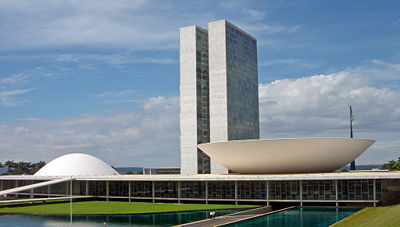
The National Congress of Brazil.
Brazil’s bicameral National Congress consists of a Senate, (the upper house), and a Chamber of Deputies (the lower house). Since the 1960s, the National Congress has its seat in Brasilia. As most of the official buildings in the city, it was designed by Oscar Niemeyer following the style of modern Brazilian architecture. The semisphere to the left is the seat of the Senate, and the semisphere to the right is the seat of the Chamber of the Deputies. Between them there are two towers of offices. The Congress also occupies other surrounding buildings, some of them connected by a tunnel.
The building is located in the middle of the Monumental Axis. In front of it there is a large lawn where demonstrations take place. At the rear of the building, is the Praça dos Três Poderes, where the Palácio do Planalto and the Palace of Justice lie.
Palácio da Alvorada
The Palácio da Alvorada is the official residence of the President of Brazil. Designed by Oscar Niemeyer and inaugurated in 1958, it is located at SHTN Asa Norte in Brasília.
One of the first structures built in the republic’s new capital city, the «Alvorada» lies on a peninsula at the margins of Lake Paranoá. The principles of simplicity and modernity oriented Niemeyer’s project.
The building has an area of 89,699 square feet and three floors: basement, landing, and second floor. On the basement level are located the auditorium, kitchen, laundry, medical center, and the administration. On the landing are located the rooms used by the presidency for official receptions. The second floor is the residential part of the palace, with four suites, two apartments and other private rooms.
The building has also a library, a heated Olympic-sized swimming pool, a music room, two dining rooms. and various meeting rooms. Located in adjacent buildings are the chapel and the heliport.
Palácio do Planalto
Palácio do Planalto
The Palácio do Planalto is the official workplace of the President of Brazil. It is located at the Praça dos Três Poderes in Brasília, Brazil. As the seat of government, the term «o Planalto» is often used as a synonym for the executive branch of the government, similar to the White House in the United States or the Kremlin in Russia.
Besides the President, several major presidential advisers also have offices in the «Planalto,» including the Vice-President and the Chief of Staff. The other major government ministries are laid along the Esplanada dos Ministérios.
The Palace is four stories high and has an area of 43,056 square yards. Four other adjacent buildings are also part of the complex.
Supreme Federal Tribunal
Chambers of the Brazilian Supreme Federal Tribunal
The Supreme Federal Tribunal is the highest court of law of the Federative Republic of Brazil. The court functions as a last resort tribunal and a Constitutional Court; its rulings therefore cannot be appealed. It can also overturn laws passed by the Congress. This happens when the court judges a direct action of unconstitutionality, Ação direta de Inconstitucionalidade or Adin.
The members of the court, who are called ministers (ministro), are appointed by the President and approved by the Senate. They serve until compulsory retirement, at 70 years old.
The number of members has changed through history. The Constitution of 1891 decided that the court would have 15 members. When Getúlio Vargas came into power, the number of members was reduced to 11. It changed to 16 in 1965, but returned to 11 in 1969. It has not changed ever since.
Higher education
There are several institutions of higher learning in Brasília, including: Universidade Católica de Brasília, Centro Universitário de Brasília, Centro Universitário do Distrito Federal, Centro Universitário, Instituto de Educação Superior de Brasília, União Pioneira da Integração Social, Universidade Paulista, and the Universidade de Brasília (University of Brasília.)
The University of Brasília (UnB), which opened in 1962, is central to much of the city’s cultural life. The architect Oscar Niemeyer designed its main building, the Central Institute of Science (ICC). UnB, located in the heart of Brasília on the banks of Paranoá Lake, is one of the most respected institutions in Brazil. Its modernistic buildings house 23 institutes and schools; 50 departments; 16 scientific, technological, cultural, artistic, and general service centers; student, faculty and staff residences; a hospital; a sports center equipped with swimming pools, racetrack, and various sports fields and courts; a seismological observatory capable of registering earthquakes across the planet; an animal-research laboratory and an ecological station. UnB is also about to build its own technological park. UnB’s central library has the largest archive in midwestern Brazil and caters to the needs of the Federal District and of researchers from across the nation. UnB also maintains the Fazenda Água Limpa, a farm in the outskirts of Brasília where ecological, agricultural, and forestry research is conducted.
Each semester, the University of Brasília accepts nearly 2,000 incoming students from a pool of approximately 20,000 candidates for its 63 daytime or evening undergraduate programs. On the graduate level, the university offers 64 master’s programs and 45 doctoral programs.
Interesting facts about Brazil
Yes, this is a pretty interesting fact about Brazil, let alone the whole continent.
João Pessoa is the easternmost city in the Americas. The city is the capital of Paraíba state and famous for having abundant green areas.
Will you resist watching the sunset here?
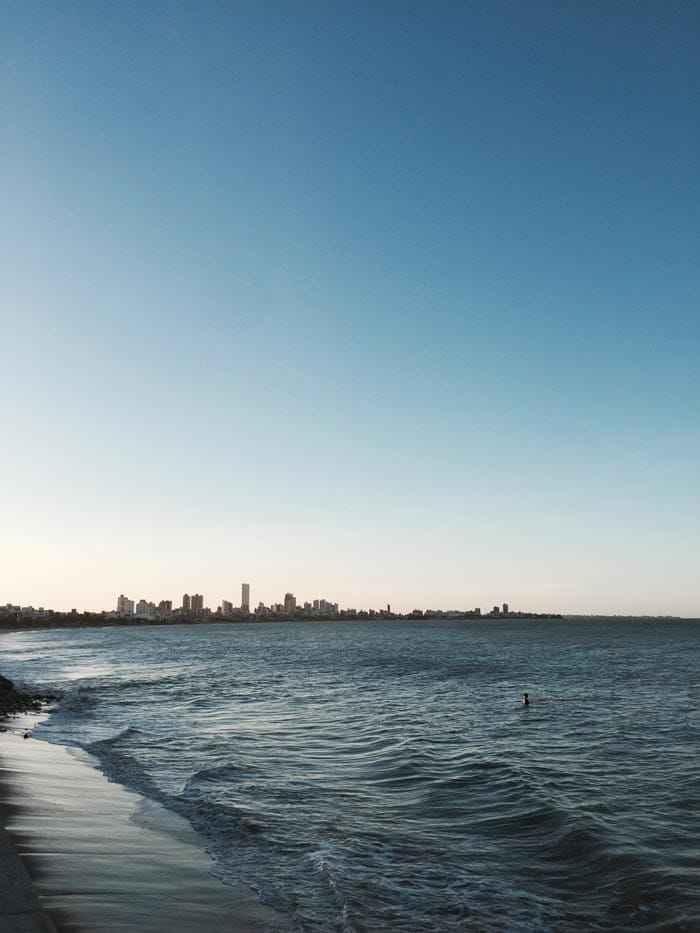
Fun fact about Brazil: the sun rises first in João Pessoa
Brasília is not Brazil’s first capital
First things first. Plenty of readers have asked me if Brazil’s capital is Rio de Janeiro, but it’s not.
Well, to comfort you a little bit, know that the city was once the capital of the country.
In fact, Brazil has had three capitals: Salvador, Rio de Janeiro, and the current one, Brasília.
There is a replica of the 14th-century Japanese temple Kinkaku-ji in Brazil
With a massive Japanese community, it doesn’t come as a surprise that São Paulo has a replica of one of Japan’s most significant temples, right?
A little over an hour’s drive from the city center, the town of Itapecerica da Serra is home to a beautiful cinerarium.
This cinerarium is based in the Japanese Kinkaku-ji temple’s replica surrounded by a gorgeous garden. This is a great day trip from SP.
In Kyoto, this temple is covered in gold leaf; hence, the name Kinkaku-ji, which means Golden Pavilion in English.
Credits
New World Encyclopedia writers and editors rewrote and completed the Wikipedia article
in accordance with New World Encyclopedia standards. This article abides by terms of the Creative Commons CC-by-sa 3.0 License (CC-by-sa), which may be used and disseminated with proper attribution. Credit is due under the terms of this license that can reference both the New World Encyclopedia contributors and the selfless volunteer contributors of the Wikimedia Foundation. To cite this article click here for a list of acceptable citing formats.The history of earlier contributions by wikipedians is accessible to researchers here:
Brazil history
The history of this article since it was imported to New World Encyclopedia:
History of «Brazil»
Note: Some restrictions may apply to use of individual images which are separately licensed.
References
- Alves, Maria Helena Moreira. State and Opposition in Military Brazil. Austin, TX: University of Texas Press, 1985. ISBN 0292775989
- Amann, Edmund, and Werner Baer. The Illusion of Stability the Brazilian Economy Under Cardoso. Urbana, IL: University of Illinois at Urbana-Champaign, 1999.
- Bellos, Alex. Futebol: The Brazilian Way of Life. New York: Bloomsbury, 2002. ISBN 1582342504
- Bethell, Leslie. Colonial Brazil. Cambridge: Cambridge University Press, 1987. ISBN 0521341272
- Costa, Cruz. A History of Ideas in Brazil; the Development of Philosophy in Brazil and the Evolution of National History. Berkeley: University of California Press, 1964.
- Fausto, Boris. A Concise History of Brazil. Cambridge Concise Histories. Cambridge: Cambridge University Press, 1999. ISBN 052156526X
- Furtado, Celso. The Economic Growth of Brazil, a Survey from Colonial to Modern Times. Berkeley: University of California Press, 1963.
- Leal, Victor Nunes. Coronelismo the Municipality and Representative Government in Brazil. Cambridge: Cambridge University Press, 1977. ISBN 0521214882
- Malathronas, John. Brazil Life, Blood and Soul. Summersdale Travel. Chichester, West Sussex, UK: Summersdale, 2003. ISBN 1423745272.
- Martínez-Lara, Javier. Building Democracy in Brazil the Politics of Constitutional Change, 1985-95. New York: St. Martin’s Press, 1996.
- Prado Júnior, Caio. The Colonial Background of Modern Brazil. Berkeley: University of California Press, 1967.
- Schneider, Ronald M. Brazil Culture and Politics in a new Industrial Powerhouse. Boulder, CO: Westview Press, 1996. ASIN B079ZBZJS6
- Skidmore, Thomas E. Black into White; Race and Nationality in Brazilian Thought. New York: Oxford University Press, 1974. ISBN 0822313200
- Wagley, Charles. An Introduction to Brazil. New York: Columbia University Press, 1963.
- The World Almanac and Book of Facts. New York: World Almanac Books, 2006. ISBN 0886879647
Brazil number ones
São Paulo is the largest city in the southern hemisphere
Brazil’s vibrant financial center, São Paulo metropolitan area, has about 21 million residents, while the city has approximately 12 million.
No wonder people call it the New York of South America. São Paulo is a massive city.
Brazil has more animal and plant species than any other country in the world
There’s a consensus in the biology world that Brazil is the most biodiverse country on the planet and rightly so because Brazil has the most known plants, amphibians, freshwater fish, and mammals.
Brazil has two biodiversity hotspots (the Atlantic Forest and savanna, known as cerrado), six terrestrial biomes, and three large marine ecosystems.
At least 103,870 animal species and 43,020 plant species are currently known in the country, comprising 70% of the world’s cataloged animal and plant species, according to Biofin.
Brazil has been the largest producer of coffee for the last 150 years
If you’re a coffee drinker, odds are you drank Brazilian coffee this year.
That’s because Brazil is by far the world’s largest producer and exporter of coffee, accounting for 30% of the world’s production.
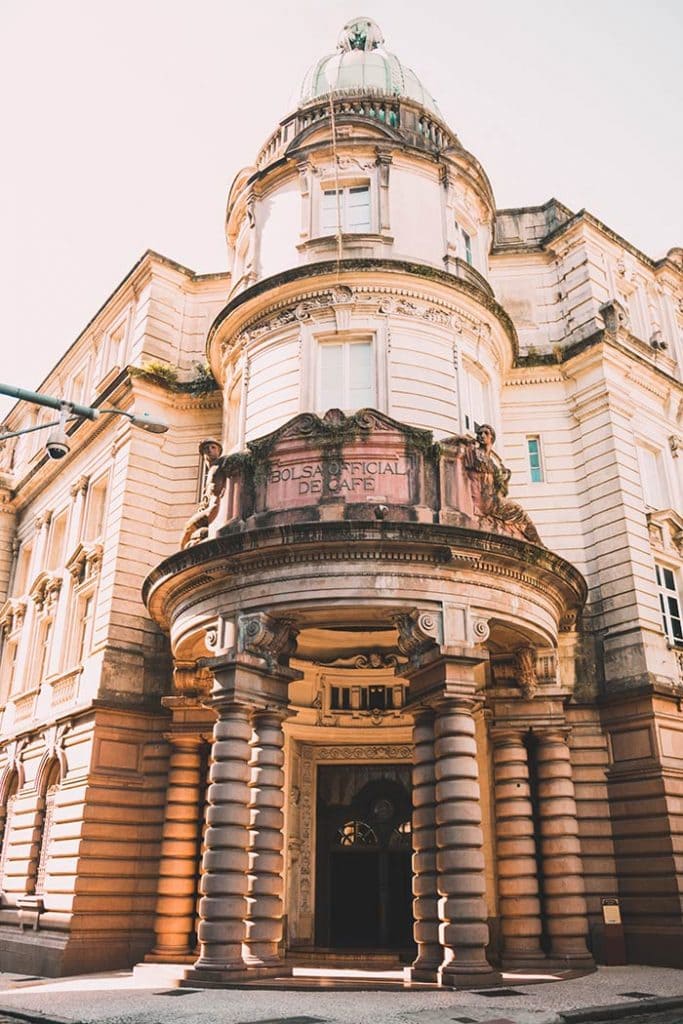
Brazil facts: The country has been the largest producer of coffee for the last 150 years
External links
All links retrieved June 23, 2016.
- About Brasilia. www.aboutbrasilia.com.
- Brasília e Região Convention & Visitors Bureau. www.brasiliaconvention.com.br.
- Government website in Portuguese. www.brasilia.df.gov.br.
Capitals of South America
Asunción, Paraguay ·
Bogotá, Colombia ·
Brasília, Brasil ·
Buenos Aires, Argentina ·
Caracas, Venezuela ·
Cayenne, French Guiana ·
Georgetown, Guyana ·
Grytviken, South Georgia and the South Sandwich Islands ·
La Paz, Bolivia ·
Lima, Peru ·
Montevideo, Uruguay ·
Paramaribo, Suriname ·
Quito, Ecuador ·
Santiago, Chile ·
Sucre, Bolivia ·
Stanley, Falkland Islands
Funny Brazil facts
People of Pomerode Town in the south of Brazil learn a dialect of German at school
There is some stuff about Brazil that lots of Brazilians don’t know, and this information is one of them.
Maybe you don’t know, but loads of Germans immigrated to Santa Catarina and Rio Grande Do Sul in the 20th-century.
And one of the most interesting facts about Brazil is that a few German communities are still living according to their traditions.
And even more mind-blowing is that they speak a dialect of German in Brazil! Can you imagine speaking German in Brazil? Time to plan Oktoberfest in Blumenau then.
The deadliest place on earth is in Brazil
That’s a place you won’t want to visit in Brazil. In fact, no one is allowed to set foot on this island as it’s extremely dangerous.
Whoever wants to visit Queimada Grande Island, also known as Snake Island, must ask for authorization of the Brazilian Navy, take proper instructions, and be accompanied by a doctor, in case of any bites.
Generally, only scientists are allowed into the island.
That’s because, as the name suggests, this island is jam-packed of snakes. I know this is a rather weird fact about Brazil.
Still, to give you a better idea of how dangerous it is, Queimada Grande Island has about 45 venomous snakes per 328 ft (100 m).
Brazil is the country with the most national parks in the Americas
It doesn’t come as a surprise that Brazil is abundant in national parks. The country is massive, after all.
But an interesting Brazil fact is that the country has the most national parks in the whole American continent.
In total, Brazil has 72 national parks scattered throughout its territory, but most of them are in the northern region.
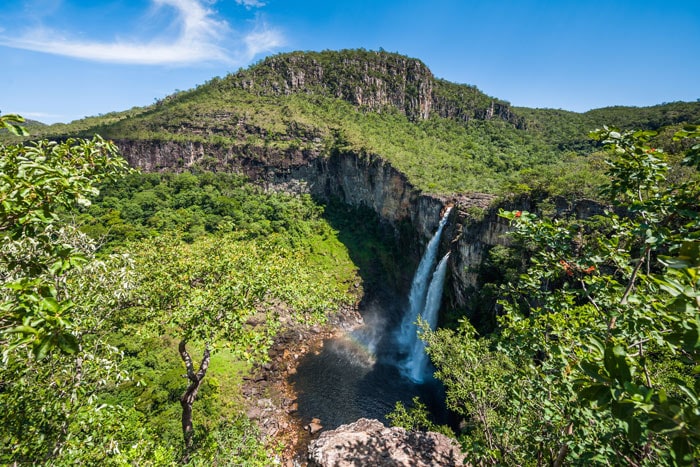
Chapada dos Veadeiros National Park
